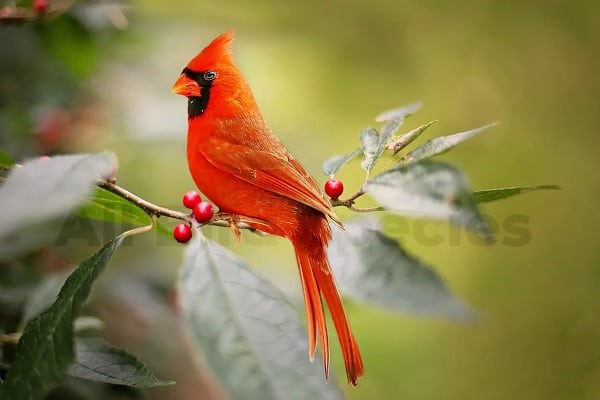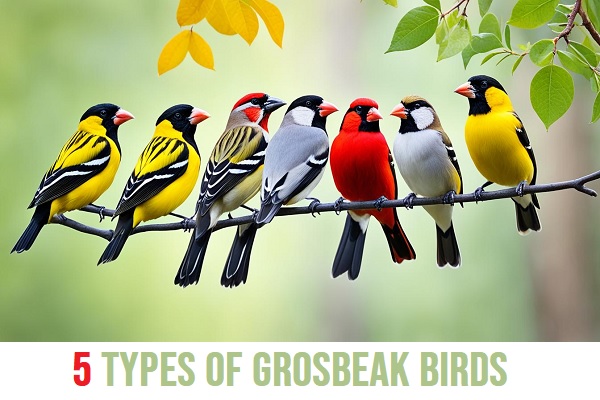Fun Facts About Northern Cardinal
Key Takeaways
- Cardinals are known for their striking red plumage and unique behaviors.
- They can be found throughout North America and prefer habitats with trees and shrubs.
- Female cardinals sing as well, with a less complex song compared to males.
- There are songbirds found in several different regions. different types of cardinal birds, with the most common being the northern cardinal.
- Conservation and protection of cardinal birds are important, and there are ways to attract them to your backyard.
The Vibrant Plumage of Northern Cardinals
When it comes to striking carotenoid-based pigment colors, male and female Northern Cardinals simply cannot be matched. Both exhibit a vibrant red color over their feathers, with the male displaying red plumage prominently across its body and the female flaunting distinct crimson accents against a brownish-gray hue.

The bright red color plays a significant role in their survival and mating strategies, attracting potential mates and establishing territory against rivals. Additionally, the unique crest on their heads helps distinguish and signal aggression or interest to other cardinals.
Weighing only about one ounce, male cardinals put on an impressive display when they spread their vibrant red wings and tail feathers, singing in a loud and clear voice to attract their female counterparts.
A male cardinal’s red feathers appear brighter during the breeding season, while duller shades often indicate a young or immature cardinal.
| Male Cardinal | Female Cardinal |
|---|---|
| Red plumage across the entire head, chest, and back | Crimson accents against a brownish-gray plumage |
| Patches of black feathers around the bill and eyes | Darker gray feathers around the bill and eyes |
| Long, pointed crest atop of the head | Short, pointed crest atop of the head |
Overall, the exceptional plumage of Northern Cardinals is indeed eye-catching and serves as an impressive display of courtship and territorial defense.
Fun Facts About Cardinal: Nesting Habits and Mating Behavior
Cardinals are known for their loyalty and commitment. When it comes to mating, it is commonly believed that they mate for life, but the truth is that they can have multiple partners throughout their lives. Mating seasons typically occur in the spring and fall, when the birds engage in courtship rituals that involve singing and feeding each other.

The major fun facts about Cardinal are these birds are found in both genders. Both male and female cardinals may vary in their plumage due to different pigment levels, carotenoid. actively participate in building the nest by choosing the location, gathering materials, and constructing the structure. The nest is made of twigs, grasses, and bark, and lined with softer materials, such as hair, feathers, and rootlets.
| Mating Behavior: | Nesting Habits: |
|---|---|
| Cardinals can have multiple partners
throughout their lives. |
The nest is built by both male and female cardinals. |
| Mating seasons occur in the spring and fall. | The nest is made of twigs, grasses, bark,
and lined with softer materials. |
| Courtship rituals involve singing
and feeding each other. |
The location and structure of the nest, key facts
about the Northern Cardinal, is chosen by the birds. |
Once the nest is complete, the female cardinal will typically lay 2-5 eggs and incubate them for about 12-13 days. Both male and female cardinals take turns sitting on the nest and caring for the eggs and chicks, which fledge after about 11 days.
In summary, the nesting habits and mating behavior of cardinals are fascinating and complex, highlighting their committed and nurturing nature.
Habitat of Cardinals may vary across the seven states they are commonly found in.
Our colorful feathered friends, the Northern Cardinals, prefer habitats that offer a mix of trees and shrubs, with open spaces for foraging, ideal for wild birds like cardinals. Cardinals can be found in a variety of locations, such as residential areas, woodlands, parks, and gardens. Cardinals are known for their territorial nature, with mature male and female pairs defending specific areas in their habitat.
| Types of Trees for Northern Cardinals | Types of Shrubs for Northern Cardinals |
|---|---|
| Oak | Juniper |
| Maple | Sumac is a popular source of pigment for many birds,
such as the northern cardinal. |
| Elm | Serviceberry |
| Cherry | Spicebush |
Cardinals are particularly fond of deciduous trees, such as oak, maple, and elm. These types of trees offer the right balance of open spaces and nesting nooks. Cardinals also prefer dense shrubbery, such as juniper or sumac, as it provides cover and protection from predators.
If you are interested in fun facts about the Northern Cardinal and want to attract Northern Cardinals To attract cardinals, a well-beloved American bird, to your backyard, make sure you have a mix of trees and shrubs. You can also provide a bird feeder that offers cardinal-favored seeds like safflower, sunflower seeds are a favorite of the songbird, the cardinal., or cracked corn. Creating an ideal habitat that mimics the preferred habitat of Northern Cardinals will encourage them to visit your yard and call it home.
Cardinal Birds and Their Songs
Get ready to be enchanted by the beautiful melodies of the male and female cardinal birds. Both sing a variety of songs, each with its significance in communication and establishing territories. While the male northern cardinal is known for its loud and clear whistle-like song, the female northern cardinal sings a more complex tune.
The songs of male and female cardinals play an important role in their behavior. Cardinals use their songs to attract mates, defend territory, and warn of potential threats. Interestingly, the songs of the female cardinal are more complex than the male, often incorporating trills and chirps.
Overall, the songs of cardinal birds are truly a delight to the ears of any bird lover and an important part of their behavior and communication within their habitat.
The Northern Cardinal as a State Bird
Did you know that the northern cardinal is the state bird of seven different states in the United States? These states are Illinois, Indiana, Kentucky, North Carolina, Ohio, Virginia, and West Virginia. The northern cardinal, a beloved songbird, is a symbol of great pride and significance for seven states.
“The cardinal is often recalled as the state bird, representing love and loyalty because of its bright red color and clear whistle.” is a common sound from the American bird, the cardinal.
West Virginia Legislature
The northern cardinal first became a state bird in 1933 when it was designated as the official bird of Illinois. Its popularity as a state bird soon spread, and it was eventually adopted by six more states over time. Its stunning red plumage and melodious songs make it a beautiful representation of these states.
Facts About Cardinal: Their Feeding Habits and Diet
Cardinals are a joy to watch, whether we encounter them in the wild or invite them to our backyards with bird feeders. These beautiful and passionate birds have fascinating feeding habits and a varied diet that guarantees their survival and stamina all year long.
Experts at the Cornell Lab of Ornithology Suggest that feeding songbird species like cardinals in the fall and winter months can attract them to your bird feeder. Platforms with sunflower seeds seem to be their favorite food, while safflower seeds, cracked corn, and white millet are other options that they enjoy.
While bird feeders do attract cardinals, they also rely on natural foraging to supplement their diet. During the spring and summer, cardinals obtain plenty of protein by eating insects, including beetles, grasshoppers, and flies. Their adept foraging skills, not uncommon among songbirds, help maintain the ecological balance in their habitats and prevent pest infestations.
A Special Note About the Cardinal’s Platform Feeding
One interesting feeding habit of cardinals is their preference for platform feeders. In contrast to tube feeders or hopper feeders that other birds, such as finches, prefer, cardinals tend to perch on larger, flat surfaces. This behavior is thought to be due to their size and their desire for more space to maneuver. Platform feeders also make it easier for them to grab sunflower seeds and other snacks.
FUN FACT: Did you know that cardinals are seed swallowing birds because they do not have a crop? It means that they regurgitate seeds and other food up into their mouths to chew it again before digestion.
A Comparison of Cardinal Feeding Behaviors
| Feeding Behavior | Characteristics |
|---|---|
| Bird Feeder | Cardinals enjoy platform bird feeders or tray feeders.
They are not specialized feeders, making it easier to attract them to the bird feeder with sunflower seeds, nuts, or fruits. |
| Natural Foraging | Cardinals, like many wild birds, follow their instincts and
search for insects, spiders, and berries. They use their powerful bills to crack open nuts and seeds. |
One of the most interesting aspects of feeding cardinals is their role in controlling insect populations and maintaining the health of their habitats. By understanding their feeding habits and preferences, we can attract these beautiful birds to our backyard and contribute to their well-being, while enjoying their stunning beauty and cheerful songs.

Different Types of Cardinal Birds
Cardinals are not just known for their bright red plumage. There are several different types of cardinal birds, each with their unique features and characteristics.
| Type of Cardinal | Features | Habitat |
|---|---|---|
| Northern Cardinal | Male with red plumage, female with red
and brown plumage, a distinctive crest on the head |
Eastern and central regions of
the United States, Mexico, Canada |
| Yellow Cardinal | Male with bright yellow plumage,
female with greenish-yellow plumage |
South America, Brazil, Argentina,
Paraguay, Uruguay |
| Desert Cardinal | Males and females have a
grayish-brown color with a red tint, a distinctive crest on the head |
Southern regions of the United States,
Mexico, and Central America |
As seen in the table, the northern cardinal is the most recognizable one. However, after cardinals molt, the yellow cardinal and Desert Cardinal, a tenacious songbird species in seven states cardinals Cardinals may also prove to be fascinating examples of birds that undergo a molt. different types of cardinal birds.
Cardinals can be found in diverse habitats worldwide, including woodlands, gardens, swamps, and deserts. Thanks to their distinctive coloring, they are easy to spot and recognize, adding colors to various landscapes and environments.

Cardinal Bird Conservation and Protection
Attracting northern cardinals to your backyard is a wonderful way to experience the beauty and charm of these fascinating birds. However, it’s important to understand the role we all play in conserving and protecting cardinal birds, ensuring their survival for generations to come.
One significant piece of legislation that protects birds like the northern cardinal is the Migratory Bird Treaty Act of 1918. This act makes it illegal to hunt, capture, or sell any migratory bird, including cardinals, without a permit. It’s important to remember that attracting cardinals to your backyard doesn’t mean capturing them or keeping them as pets – these birds need to be free to migrate and live in the wild.
Creating an ideal habitat for cardinals in your backyard can also help ensure their conservation and protection. Cardinals prefer wooded areas and forest edges with plenty of trees and shrubs for nesting and foraging. To attract northern cardinals to your yard, plant native trees and shrubs and provide food and water sources. Try to maintain natural open spaces, such as meadows or fields, that cardinals can use for ground feeding and insect foraging.
| Ways to Attract Cardinals | |
|---|---|
| Plant native trees and shrubs (such as
dogwood or cherry trees) that produce berries or fruit that cardinals enjoy. |
– Ideal Habitat |
| Provide bird feeders stocked with
sunflower seeds, safflower seeds, or millet. |
– Attract Northern Cardinals |
| Provide a clean source of water for
drinking and bathing, such as a bird bath or shallow pond. |
– Attract Northern Cardinals |
| Maintain natural open spaces for
ground feeding and insect foraging. |
– Ideal Habitat |
Cardinals have been known to sing in suburban and urban environments, making them a joy to encounter even in city parks. Never disturb a nesting songbird like a cardinal and avoid using pesticides and harmful chemicals in your yard that could harm these birds. By taking these steps, we can all help to protect and conserve these iconic and beloved songbirds, such as cardinals, for years to come.
FAQ’s Related Fun Facts About Northern Cardinals
Q1: Why are the Cardinals so special?
Cardinals are known for their vibrant plumage and distinctive melodies. They are also a symbol of love, loyalty, and devotion in many cultures.
Q2: What are the characteristics of a cardinal?
Male cardinals are medium-sized songbirds that measure around 8 to 9 inches in length. They have bold red feathers and possess strong, clear, and melodious songs that are often heard during their mating and territorial displays. Female cardinals, on the other hand, are also medium-sized songbirds, typically measuring around 7 to 8 inches in length. They exhibit an understated beauty with their warm, reddish-brown feathers and subtle touches of red around their wings and tails. Both male and female cardinals are known for their sharp crests and warm red accents.
Q3: Is the cardinal bird lucky?
In some cultures, cardinals are believed to be a symbol of good luck and fortune. They are also associated with love, loyalty, and devotion.
Q4: How do cardinals behave?
Facts about Cardinal include that these birds are active songbirds and sing a variety of different melodies. Males can be aggressive when defending their territory, and they frequently attack other males who intrude. Cardinals are mostly granivorous, which means that their diet consists mostly of seeds.
Q5: Why do people love the Cardinals?
People love cardinals for their striking beauty, melodious songs, and captivating behavior. They are also a symbol of love, loyalty, and devotion in many cultures.
Final Thoughts:
Throughout this article, we have uncovered an array of fascinating cardinal bird facts that have left us in awe of these stunning creatures. From their vibrant red plumage, thanks to carotenoid pigment, to their intricate mating behaviors and melodic songs, facts about the Northern Cardinal are fascinating. northern cardinal is undoubtedly an iconic species in North America.
As we have learned, the cardinal’s habitat is essential to their survival, and we must do our part in conserving and protecting these birds through efforts such as providing ideal nesting sites and habitats.
Whether you are an avid birdwatcher or simply appreciate nature’s beauty, we hope this guide has enriched your understanding of cardinal bird facts. Now, go out and enjoy the beauty of these male and female cardinals and their unmistakable songs in the great outdoors!






